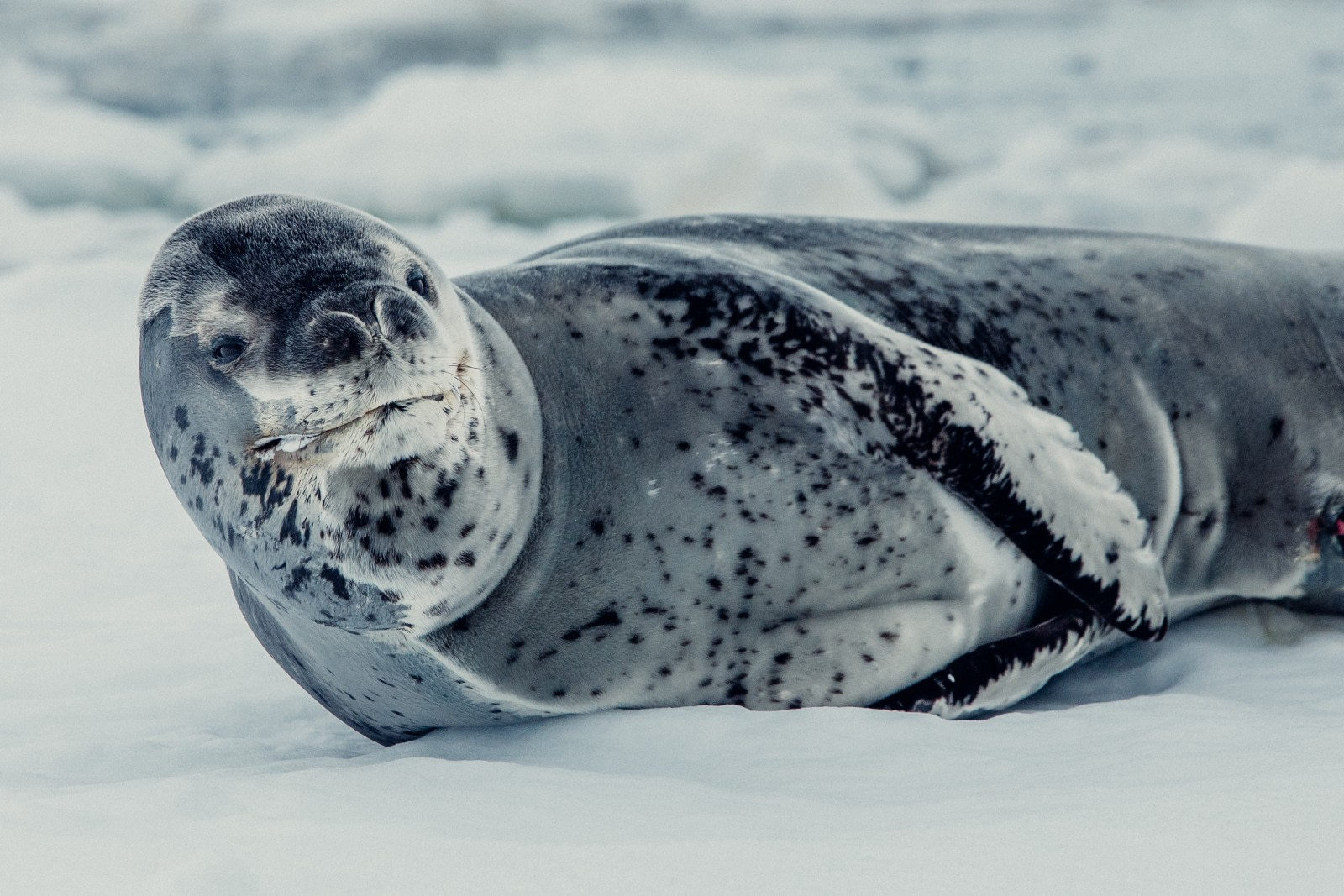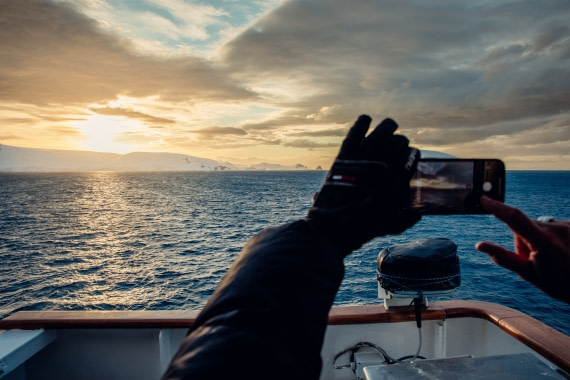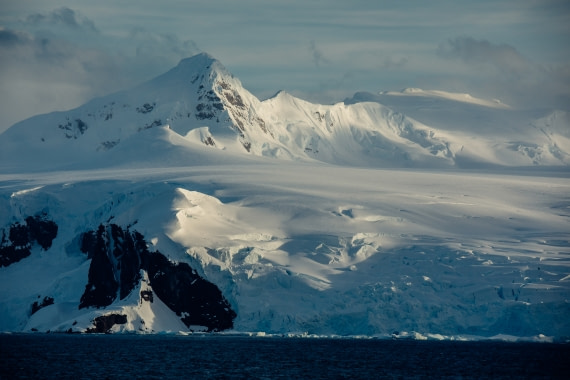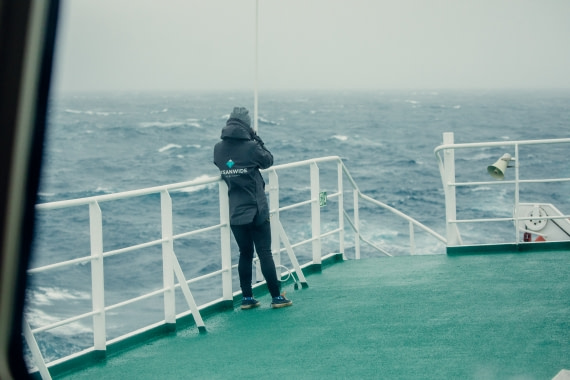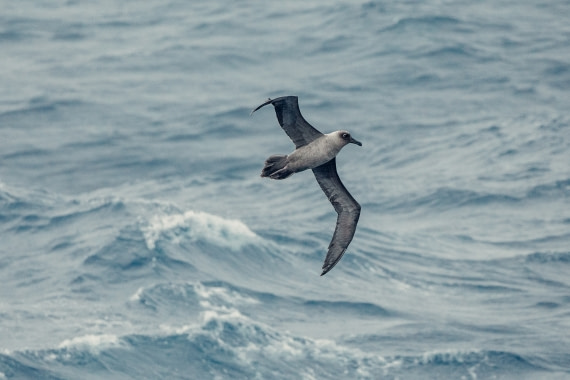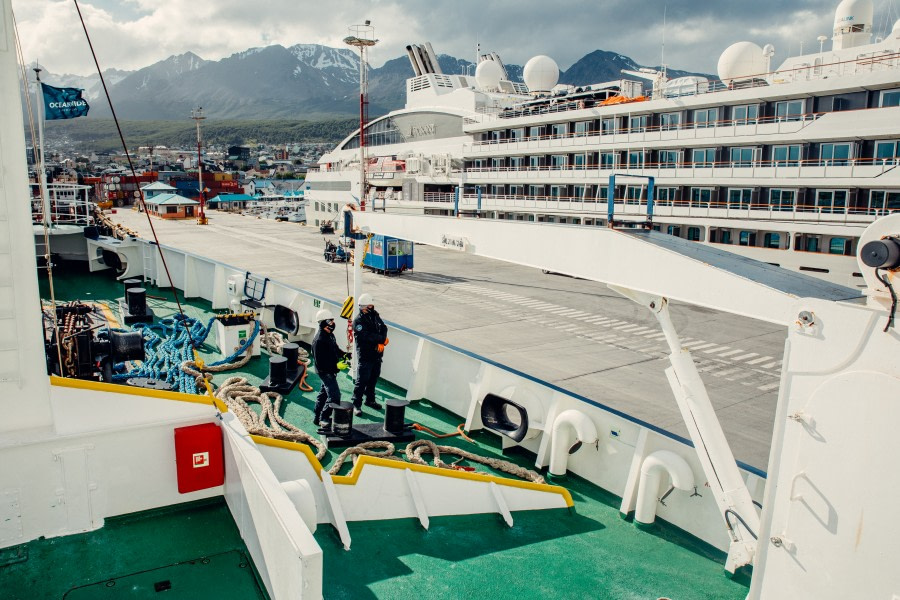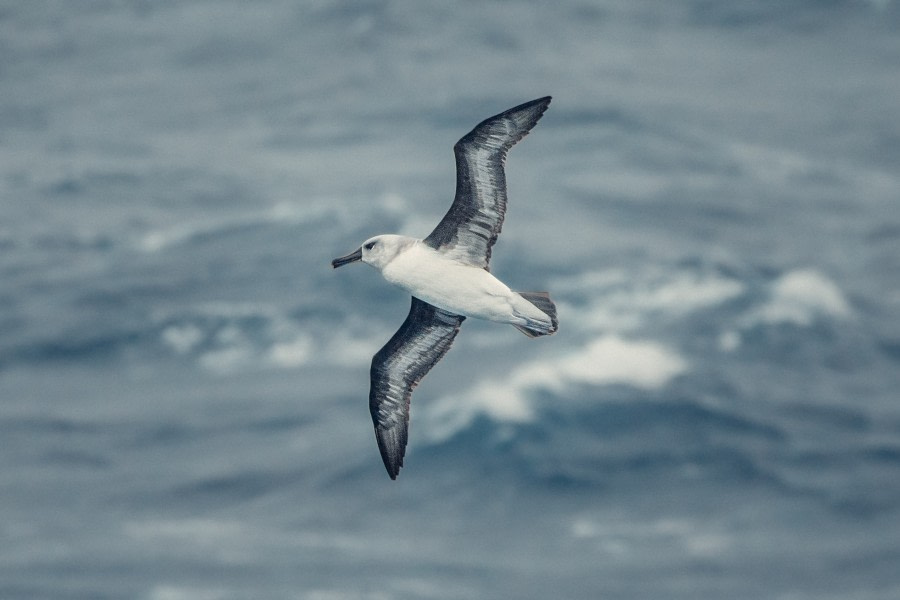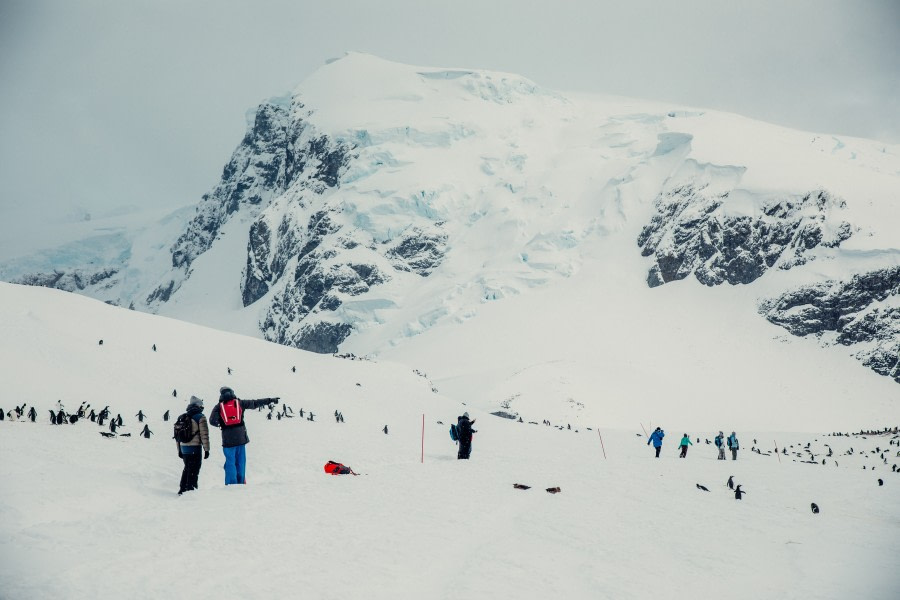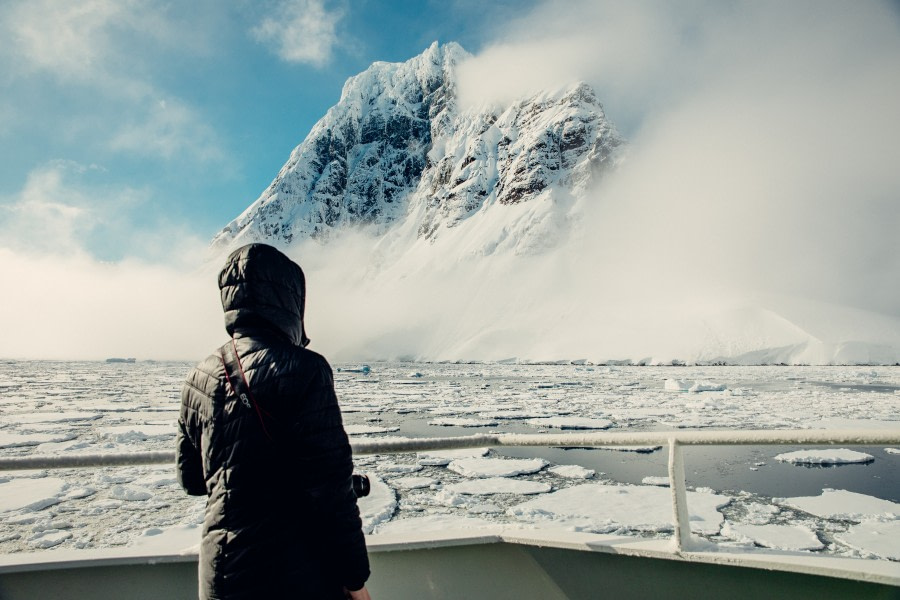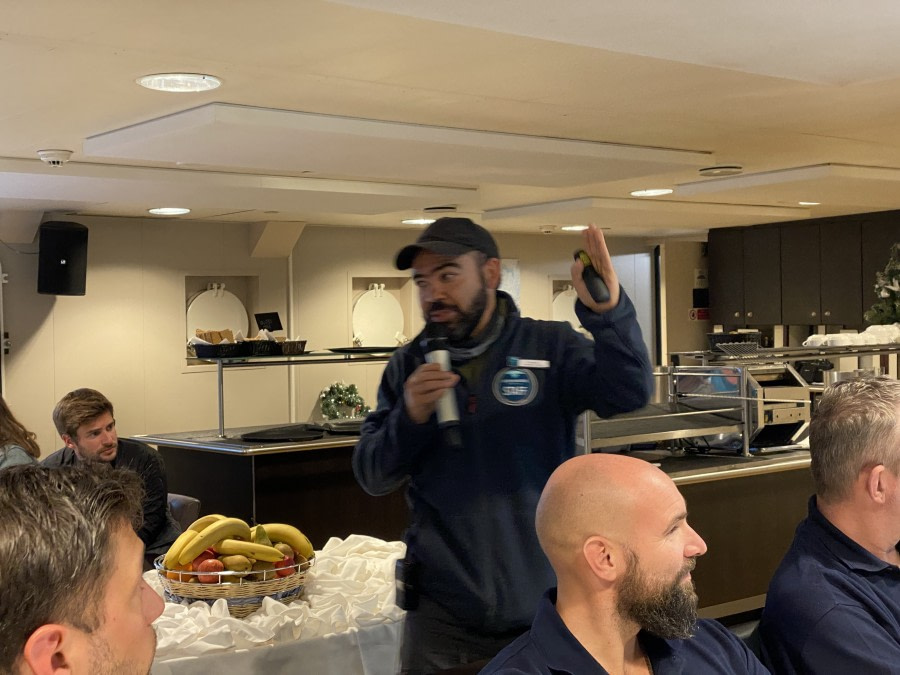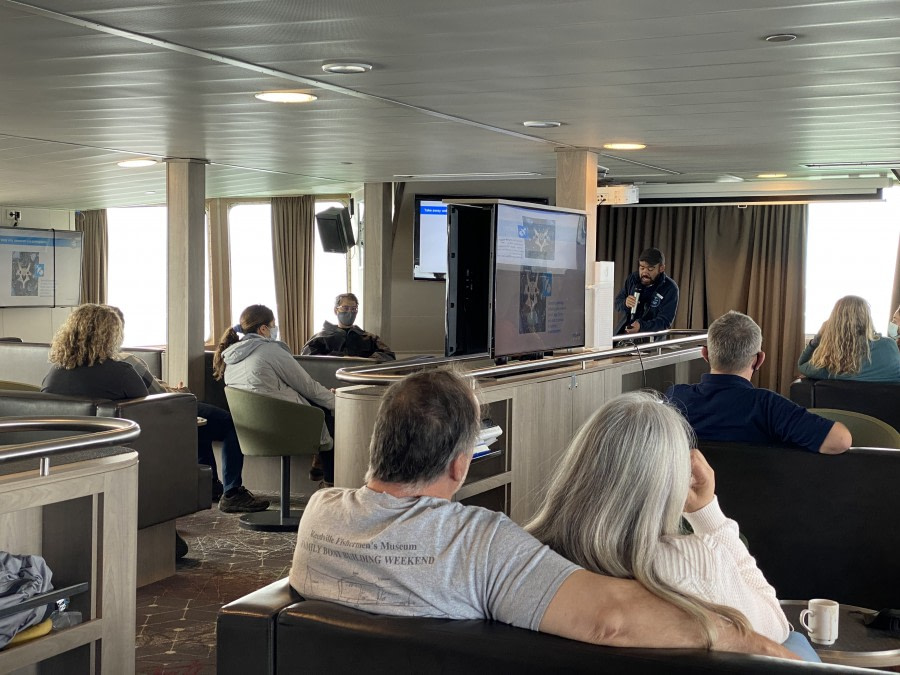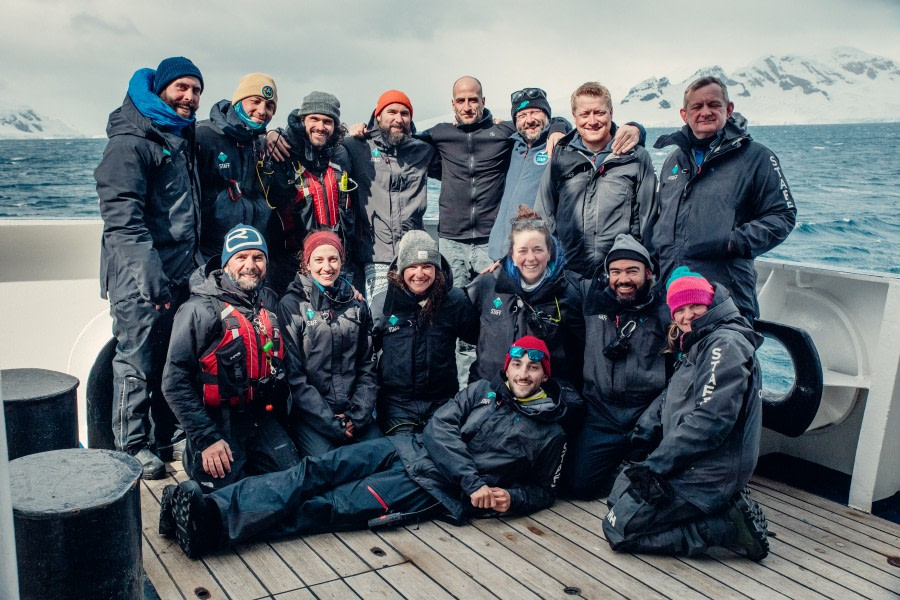| Fecha: |
18.12.2021 |
| Posición: |
65°06.3’S / 065°59.4’W |
| Viento: |
SW 3 |
| Clima: |
Fog |
| Temperatura del Aire: |
+2 |
Our day started really early with an announcement from our Expedition Leader saying that we will start crossing the Lemaire Channel soon. Even if it was tempting to stay in our warm bed, we all headed to the back and front decks to admire the beautiful landscape. Around 7am, we started to enter the strait under great weather conditions, even if there was some fog. We had doubts about the ice conditions inside the channel and we were prepared to turn around in case the narrowest point would be blocked. However, the luck stayed on our side, and, as we continued, we realized that it was possible to transit the whole channel without problem.
Unfortunately our initial plan to do a landing on Peterman Island could not be carried out because of the amount of sea ice, so the captain and Eduardo decided to continue our way down to Port Charcot and to just do a ship cruise, in order to take advantage of the incredible views of the surrounding mountains and glaciers, as well as to take advantage of the pancake ice to observe the numerous seals that were hauled out. We found a large group of about 20 crab-eater seals hauled out together, and we saw a minke whale very close to the ship.
It had snowed during the previous night, and we used the opportunity to have a snowball fight on the upper deck, right behind the bridge. Our group of American scouts carried out a ceremony on the bow of Plancius to honour their members during the crossing of the Lemaire Channel. Once at Port Charcot and after an early lunch we started our zodiac cruise in order to maximise our time on the water. The weather conditions were perfect: no wind, flat sea, a little cloudy but still some sun peaking through.
There were very impressive icebergs across the entire area, and there were many penguins spread out in the water cleaning themselves on the surface. Shutting down the zodiac engine actually allowed us to be visited by these rafts of penguins and they stayed with us for quite a while, until a minke whale appeared close by, and we decided to go and have a closer look. It was swimming very close to shore and into relatively small bays, which probably meant that there was krill around. Halfway through the cruise when the wind picked up a little we got a call from the bar-zodiac in which our hotel manager Alex was visiting every single zodiac in order to offer us some hot beverages. This was very much appreciated by both our guests and the zodiac drivers, and it gave the courage and motivation to continue on our expedition through the ice.
Pippa then spotted a leopard seal close to a large tabular iceberg, and we took turns to get a closer view of this magnificent predator. But we did not stay longer than 10 minutes in total in order to not disturb it. Everybody got a good look at the leopard seal, and our photographer Juan took some impressive pictures. We found a group of gentoo penguins in which there were a couple of chinstrap penguins and even an Adelie penguin, and some passengers even got a picture with the three species.
On the way back to Plancius we were lucky to come across 3 minke whales which were slowly swimming along the ice edge, and the passed very close to our zodiacs. It is quite uncommon to see minke whales together and swimming so slowly and relaxed, so we were very lucky. These are the only baleen whales which stay all year long in Antarctica.
Back on the ship during recap, Pierre gave us a short presentation about Antarctic minke whales, and Juan did a recap on photographs taken during the camping. Up on returning to our ship, we enjoyed our traditional BBQ night, an activity in which we enjoyed very much the fine food prepared by Khabir and his staff. While eating, we were surrounded by the wonderful landscapes of the channels around us. The day ended with our ship sailing through the Lemaire Channel, but the sea was a little rougher than on the way South.
Dive 5: Port Charcot
GPS 65°04,3S / 64° 02,4W
Divetime 45min
Max Depth 33fsw / 10m
Plancius was surrounded in pack ice today. We took a Zodiac to shore, pushing through the loose ice. There was a good sized lead of ice-free water close to shore and zero wind, so we opted to dive. Some of the group dove an iceberg others dove the bottom near the shore. We had to contend with a moderately strong current throughout the dive. This was a beautiful bottom, with many animals and lots of kelp. Starfish, limpets, sea cucumbers, sponges, sea stars, amphipods, isopods, and even small fish were plentiful at this site. (Jeffrrey Bozanic)
Kayaking Port Charcot
A day that never often happen in the northern part of the peninsula. The bay was full of sea ice. We worked our way along floating pieces of ice and did a good landing on a quite small floating sea ice.
